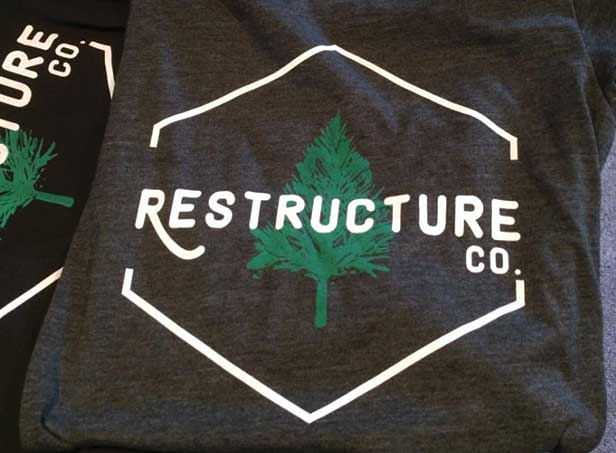Product Hub May 31, 2019
My Journey Into Eco-Friendly Screen Printing
I’m often asked how I started my eco-friendly screen-printing shop. Quite frankly, that’s hard to answer. This whole business started with just one question. Years ago, I was in Target, looking at a graphic T-shirt, and I asked myself: How do they get designs like that onto shirts? That sparked a personal interest in screen printing, which eventually morphed into a real business. However, I was alarmed by the chemicals used in traditional screen printing and made the conscious decision to run my business in the most responsible way possible.

Judy Mazzuca is the president of Ink Forest, an eco-friendly screen-printing shop based in Oak Forest, IL. Ink Forest is certified by Green America as a business that meets high standards for social and environmental impacts
So, what is eco-friendly screen printing? It encompasses much more than the use of water-based inks. When running an eco-friendly or green screen-printing shop, you have to consider your supply chain. Knowing where all your supplies, apparel, inks, solvents and equipment is made and that it’s ethically sourced is what really makes it eco-friendly.
In a sense, it’s not too different than traditional screen printing. One of the biggest differences is the use of water-based inks. Water-based inks don’t contain PVCs or phthalates usually found in traditional plastisol inks. Water-based inks require only water and soybean-based solvents in the cleaning process as opposed to benzene and toluene. Printing with water-based inks is a great way to start your shop on its journey to become eco-friendly. (You also have to dispose of it properly – just because it’s water-based doesn’t mean you should pour it straight down the drain.)
Probably the biggest misconception regarding sustainable screen printing is its durability. The assumption is that water-based inks will wash out, which is simply not true. As long as the shirt has been cured properly, the image will last as long as the shirt. This is because during the curing process, the water is evaporated out of the ink, thus dyeing the threads. The image is part of the shirt. Another misconception is that water-based inks can only be printed on light garments. Again, not true. The opacity of water-based inks has come a long way in the last few years.

Clients looking for water-based inks typically also want eco-friendly apparel made from organic or recycled material.
Here are a few tips to consider when printing with water-based inks:
• Place a filter in the washout sink. It will catch any small particles before they go down the drain.
• Water-based inks need to keep moving so they won’t dry out on the screen. I keep a humidifier running in my shop to help with this.
• If it gets cold where you are, make sure the inks remain at room temperature. Otherwise, the water in them could freeze.
• If you find that your ink is drying in the screen, baby wipes work really well to clear the image.
• If you’re planning to offer water-based inks, the best way to market is through education. Make sustainability part of your branding strategy, and explain to customers exactly what makes your methods better than traditional techniques.
For some customers, it will be an easy sell, since they’re already seeking out green products. This is a growing customer base that will only get larger as awareness increases. When consumers know about the sustainable option, the products sell themselves. Remember, though, it’s about more than just the inks. My clients are also looking for apparel that uses Global Organic Textile Standard (GOTS) Certified cotton or recycled polyester and made in America, and they’re willing to pay a premium for it.
Why do I print this way? Because we can produce sustainable products at competitive prices, the decision becomes a no-brainer for our clients. Responsibility is always a winning business model.

Product Hub
Find the latest in quality products, must-know trends and fresh ideas for upcoming end-buyer campaigns.
